Come the holiday period, Monopoly has no place in my house. It’s not just that I find the game crushingly dull, nor that it invariably inspires family arguments — though these are both true. It’s the fact that, over the years, I’ve become convinced that it is a fundamentally bad game.
It is simply not designed to promote fun. There are many reasons: that there are so few meaningful decisions for players to make, that they must wait interminably between turns, that it is too easy to lose early and then be forced to keep playing while being slowly ground into insolvency by a gloating relative.
If Monopoly is good at one thing, it’s stoking resentment. So why surrender to the inertia of another trudge towards Park Lane when the wider world of board games today offers such a panoply of diverse delights? I’ve recently swapped my dusty Monopoly and Cluedo boxes for fresh games which have gone down famously at family events — some raucous, others intellectually stimulating, all of them bringing us together rather than encouraging tensions. There are even some that are designed with such fine aesthetic sensibility that they are now displayed on prime shelf real estate rather than hidden in a dusty cupboard.
Some people don’t realise how much variety is out there. For decades, it seemed like the only choices in board games were, on the one hand, children’s games with no appeal for anyone over the age of eight and, on the other, mystically dense German games with Bible-sized rule books and soporific themes such as eking out a living as a subsistence farmer in 17th-century Europe (this example is real — it’s called Agricola and it’s actually pretty good).
But this Christmas you don’t have to choose between a mind-numbingly simple game and a mind-spinningly complex one. There are games to suit every difficulty level, every group size, every field of interest. You no longer have to play as a cigar-chomping property trader or an army general. In modern games you might be a keen ornithologist, an unethical potion seller, a mosaic designer or a ghost who can only communicate through the medium of dreams.
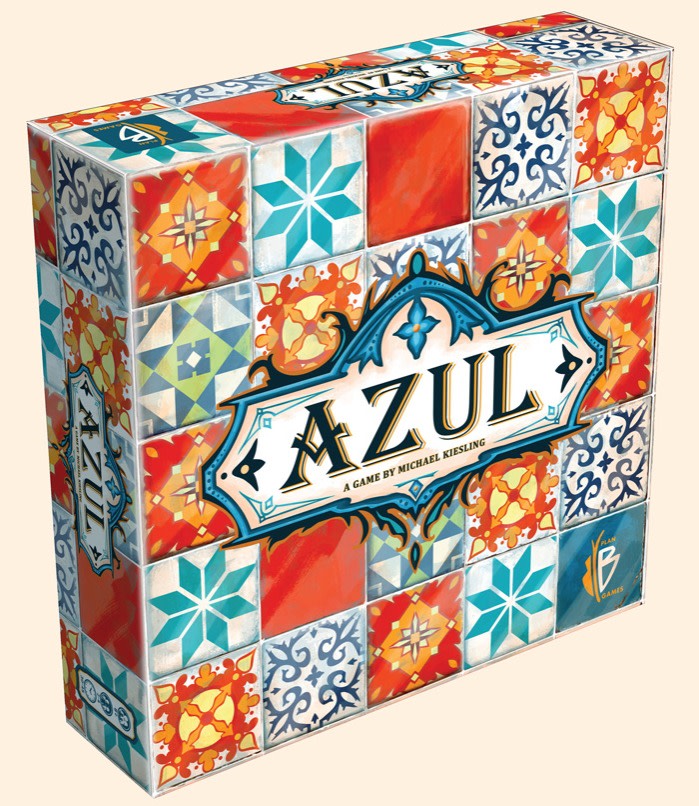
These new ideas are emerging at a time when board games have stepped out of the shadows of geekdom to be embraced as a beloved and respected hobby for all ages, enjoyed in trendy purpose-built cafés as much as at home. As a rare source of indoor entertainment that does not involve a screen, board games became particularly popular during the lockdowns of the pandemic. Many first turned to games for a bit of distraction, but then realised they had found a valuable tool to connect with others through play.
So given there are so many compelling options, where should you start? The cornerstone in the pantheon of modern classics is Catan, a settlement-building game which has now sold more than 40mn units. Tom Brewster, of the leading board-game YouTube channel Shut Up and Sit Down, roots the appeal in Catan’s “really unique lightning-in-a-bottle cocktail of mechanics”: it’s a game that tickles the part of players that likes strategy, building and structure, but also encourages lively conversation through trading and negotiation.
Yet in the past few years, new games have emerged whose expert designs, both aesthetically and mechanically, give Catan some stiff competition. Azul is one that whimsically challenges players to design azulejo tiles in the court of a Portuguese king; points are scored according to their arrangements. The game is easy to pick up and its colourful tiles are a joy to handle, but these aesthetic pleasures belie the deep levels of strategy that emerge as your grand designs are realised or thwarted by the choices of your competitors.
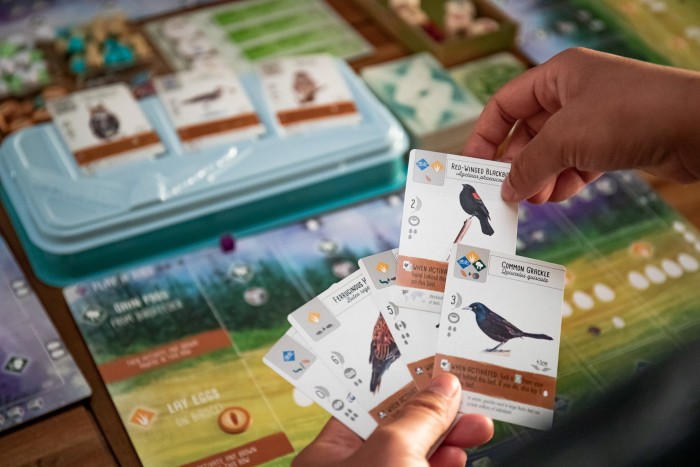
A similarly alluring game is Wingspan, which asks players to fill an aviary with a variety of birds. From the gorgeous illustrations on the bird cards to the delicately pastel-shaded eggs, this might be the most opulently beautiful board game on the market, although its rules may prove complex for newcomers, who must navigate the competing tasks of laying eggs, finding food and introducing new feathered companions to their flock. Those looking to learn the rules of a new board game would do well to turn to YouTube rather than printed instruction manuals — it’s always easier to see a game in action.
For those who prefer to collaborate rather than compete, there’s a growing field of co-operative board games. One of the most original is Mysterium, a haunted house mystery that casts players as psychic detectives trying to solve a Cluedo-like murder. The twist is that one player is cast as a ghost who knows whodunnit, but can only communicate with the others in the form of “dreams”: image cards containing beautiful abstract artworks. It is a rewarding and at times poetic task for players to work together, interpreting these cryptic clues to solve the case.
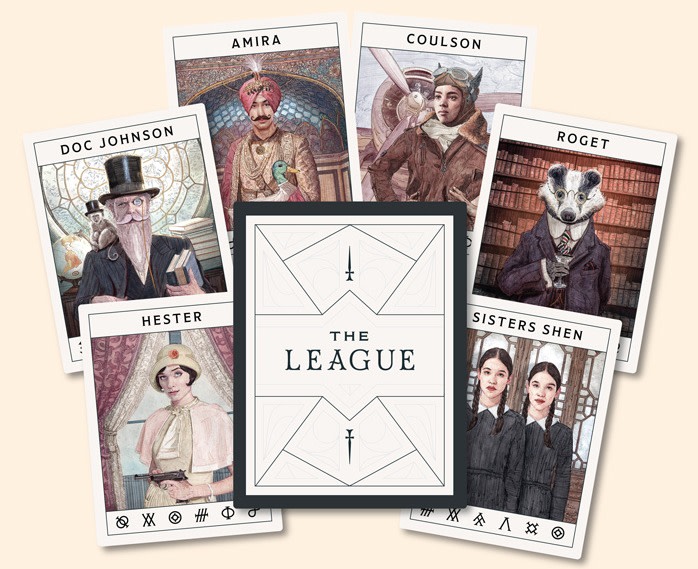
Another collaborative standout is the popular Pandemic, which plays like a reverse game of Risk. There is a world map here, but instead of spreading your armies across it, you are dashing around trying to contain outbreaks of a virus. During the worst of Covid-19, this game might have hit a little too close to home, but it remains one of the smartest and most accessible co-operative games out there. Those who enjoy Pandemic and want to take it further might try Pandemic Legacy, which spins a longer story over multiple game sessions, during which the rules shift and players must make choices that will fundamentally change the game’s narrative.
A firm favourite at holiday gatherings are party games, which are social rather than strategic, offering a dose of fun and energy that can be a lifesaver during the post-turkey slump. On the raucous end you have the likes of Happy Salmon, a furiously fun game of cards where you must find partners with a matching card to perform a series of gestures. You will shout yourself hoarse and finish in 90 seconds, desperate to play again. Then there’s Throw Throw Burrito, a bit like Uno but with the eccentric addition of a pair of squishy toy burritos that must be hurled at competitors to score points. Meanwhile, the simple yet rewarding card game Scout is one of the best offerings from Japanese game designer Oink, whose products are sold in tiny, elegant boxes.
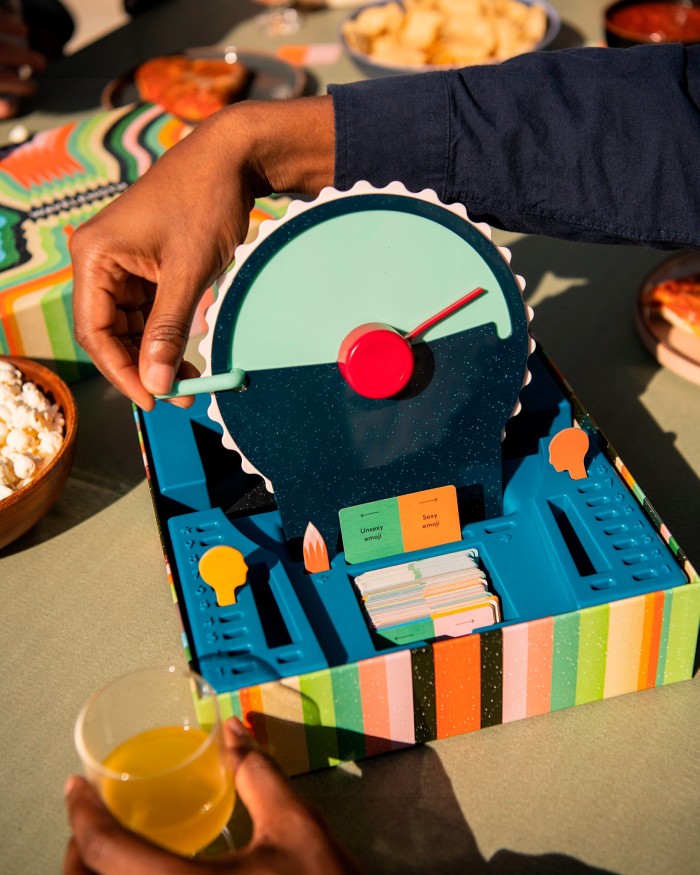
Some of the best-loved party games involve splitting into teams and challenging your communication skills. Codenames has been perennially popular since it came out in 2015, while the beautifully designed Wavelength appeared in 2019 and went viral on TikTok earlier this year. Both games split groups into teams, with one player trying to communicate a word or concept to others in a roundabout way. Such games can lead to hilarious misunderstandings or a sense of pure bliss when your companions achieve a near-telepathic feat, getting the answer exactly right. Just One is a particularly family-friendly word game which can be picked up and played quickly, while players wanting a tougher linguistic challenge might try League of the Lexicon, a trivia game resembling an elegant leather-bound tome that focuses on etymology and language.
Other party games draw on players’ abilities to dissemble and tell stories. Werewolf often proves revealing of group social dynamics, as players work to uncover killers hiding in their midst, while the brilliant Chameleon challenges a single player to keep cool under duress and mislead everyone else. Those intrigued by role-playing who find Dungeons and Dragons intimidating might look into something more accessible, such as Freelancers: A Crossroads Game, which leads players on a humorous fantasy adventure, making choices while guided by a smartphone app which includes a soundtrack and voice-acting for a colourful cast of characters.
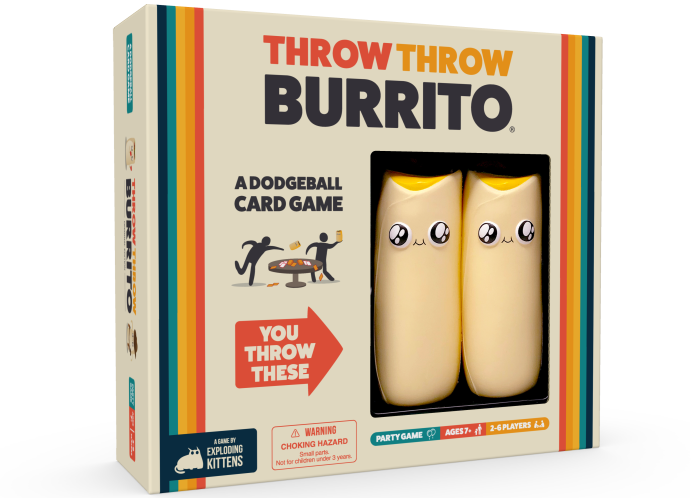
The most remarkable quality of today’s board game landscape is its plurality and diversity. You might be drawn in by the boards as beautiful design objects, their imaginative themes or opportunities afforded for humour, co-operation or healthy competition. Any time a group of people sit down around a board, they are dedicating time for play and for each other, to make new memories with the people they hold dear. So this holiday do not pass go, do not collect £200, do not even take Monopoly out of the cupboard. Look further afield. You need never be bored.
Tom Faber writes about culture and technology
Find out about our latest stories first — follow @FTProperty on X or @ft_houseandhome on Instagram






